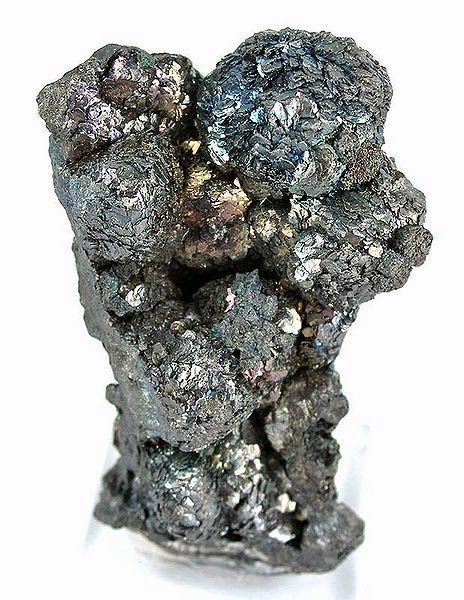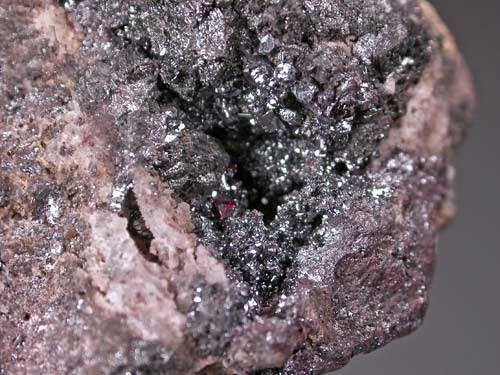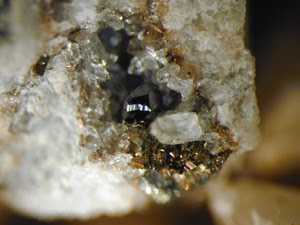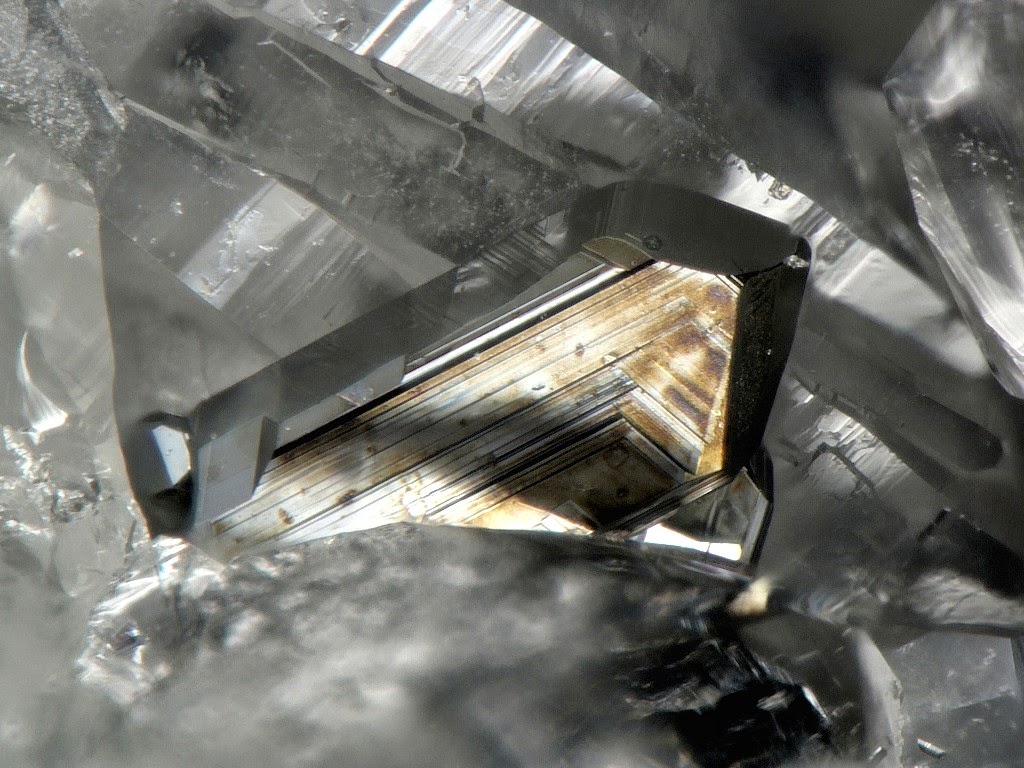
Chemical Formula: AgSbS2
Locality: Braunsdorf, Freiberg, Sachsen (Saxony), Germany.
Name Origin: From the Greek, meyon, “smaller” and argyros, “silver.” in allusion to the lessor silver content of the mineral.
Miargyrite is a mineral, a sulfide of silver and antimony with the formula AgSbS2. It is a dimorph of cuboargyrite. Originally discovered in the Freiberg district of Germany in 1824, it has subsequently been found in many places where silver is mined. It usually occurs in low temperature hydrothermal deposits. and forms black metallic crystals which may show a dark red internal reflection. The streak is also red.
Miargyrite is named from the Greek meyon, “smaller” and argyros, “silver,” as its silver content is lower than most silver sulfides.
History
Discovery date : 1829
Town of Origin : BRAUNSDORF, FREIBERG, SAXE
Country of Origin : ALLEMAGNE
Optical properties
Optical and misc. Properties : Translucent to Subopaque
Reflective Power: 26,3-38,7% (580)
Refractive Index : from 2,72 to 2,73
Physical Properties
Cleavage: {010} Imperfect
Color: Steel gray, Lead gray, Blackish red, Reddish gray.
Density: 5.1 – 5.3, Average = 5.19
Diaphaneity: Translucent to Subopaque
Fracture: Brittle – Generally displayed by glasses and most non-metallic minerals.
Hardness: 2-2.5 – Gypsum-Finger Nail
Luminescence: Non-fluorescent.
Luster: Sub Metallic
Streak: cherry red
Photos :













